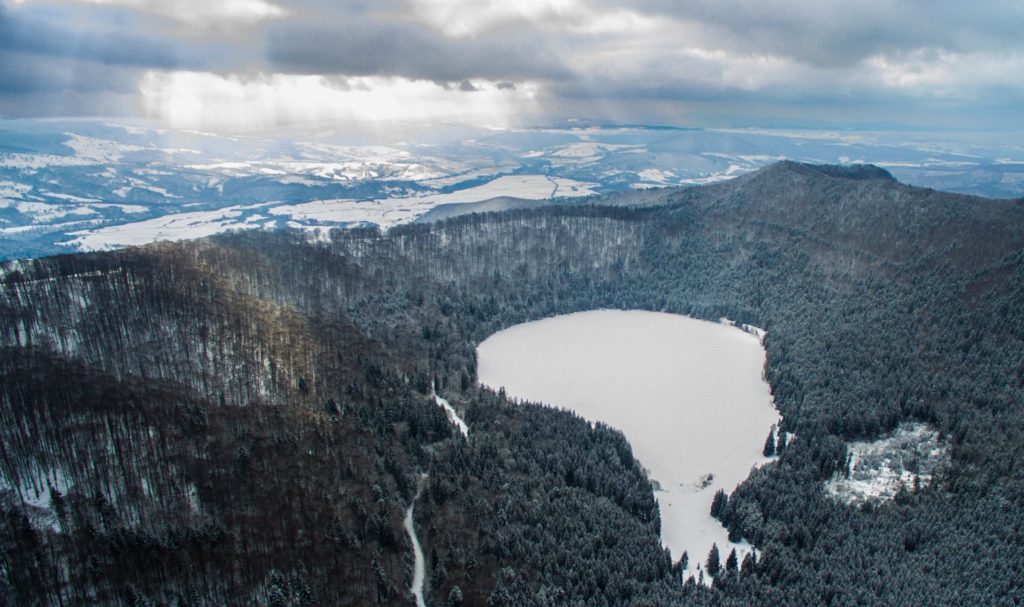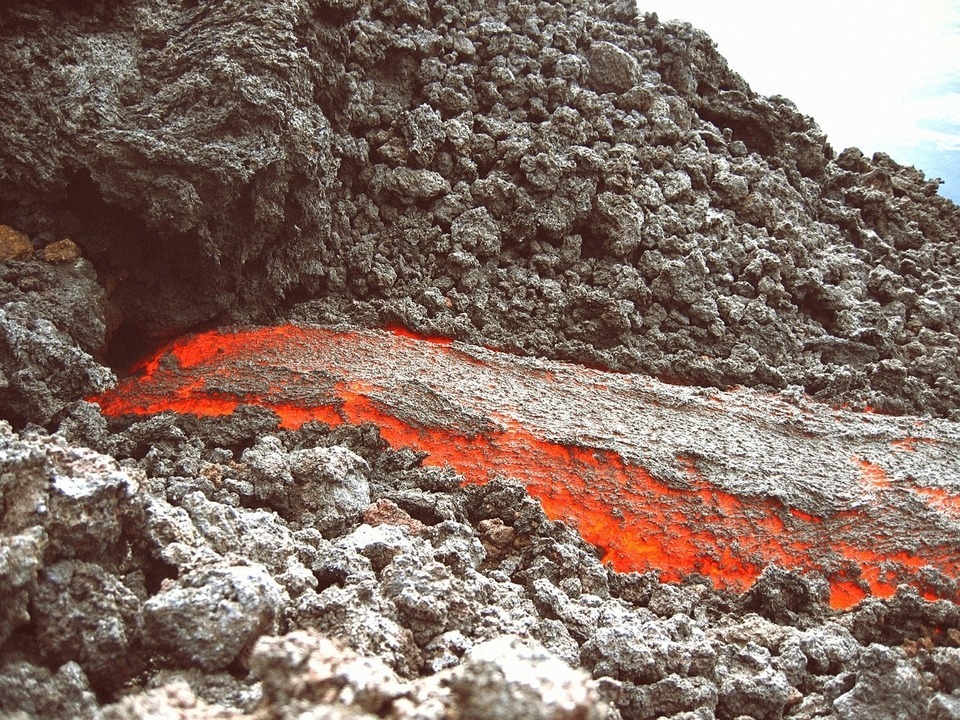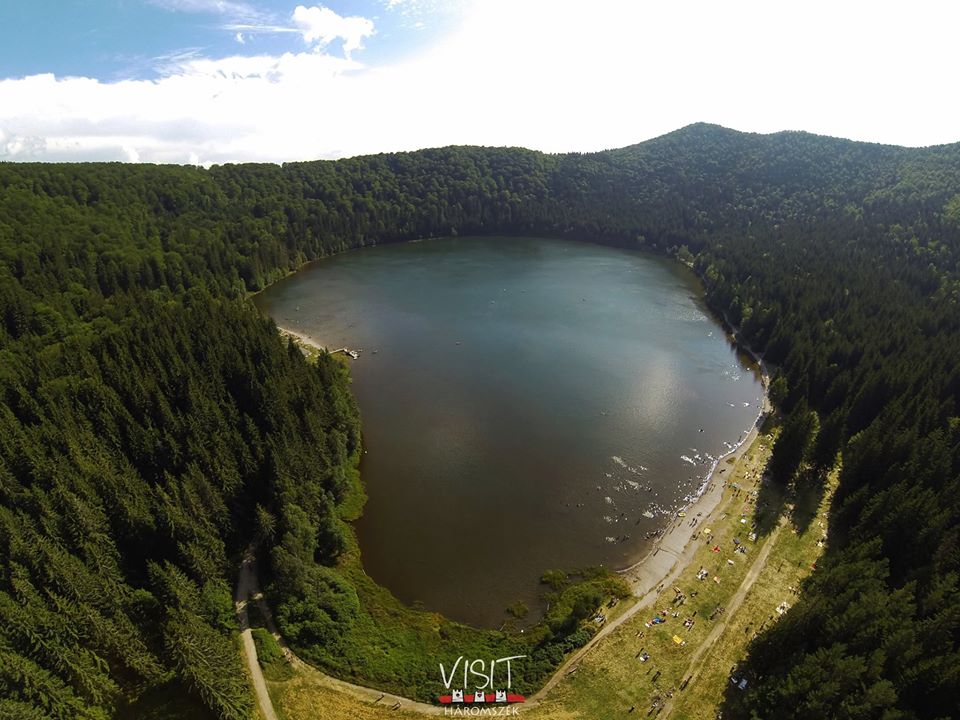Could a volcano erupt in the Carpathian Basin?

The Csomád volcano embracing St. Anna’s Lake was the last to erupt in the Carpathian Basin 30,000 years ago, but its magma chamber still contains molten lava. At present, there is no indication that it will become active, but there is no guarantee that it will remain dormant either, reports 24.
We Hungarians are horrified to receive news of volcanic eruptions and earthquakes from far away in the world, but with the reassuring feeling that such things can never happen to us. Although Hungary is far from the great fractures of the earth’s crust, that in itself does not mean that these geological hazards cannot reach us.
It is worth noting that earthquakes are not uncommon in Hungary.
Most of them can only be detected by instruments, but every year there are ones that the populace can notice as well, and there have even been earthquakes claiming lives in the past.
The last volcano
Although most of them have been dormant for millions of years, the Transylvanian Csomád volcano erupted 30,000 years ago – which is like yesterday if measured on a geographic scale – and did so with a huge explosion. By the way, this was the last volcanic eruption in the Carpathian Basin. The name may not be familiar to many, but inside the Great Csomád, the only crater lake of the Carpathian Basin, Saint Anna Lake, can be found. The volcano is young in geological terms and is far from being a “permanently extinct” volcano.

Photo: Ignácz Szabolcs; facebook.com/visitharomszek/
At present, there is no indication that it will become active again, but there is no guarantee that it will not erupt either.
Although it may seem inactive, it has been under investigation for over a decade. Getting to know the volcano better is important in many ways. Szabolcs Harangi, a geologist and a volcanologist, the head of the Department of Petrology and Geochemistry at Eötvös Loránd University and the Research Center for Vulcanology at the Hungarian Academy of Sciences, works on the research with his team.
The Carpathian Basin is a hot-spot for scientists nowadays. Some of them even think that signs of the wildlife’s collapse can be found in the Fogaras Mountains. And if the beautiful landscape got you in the mood for travel, here are some of the most beautiful places you should visit in Hungary.
We experienced the largest volcanic eruptions
As calm as the ground may look now, it had been just as active in the past. In the last 20 million years, volcanoes of the Carpathian Basin have produced the largest eruptions in Europe.
The Mátra, Börzsöny, and Tokaj Mountains, for example, are known to have been created by volcanic activity as a result of a process that began 16 million years ago. These can be considered extinct volcanoes, although it is difficult to find a simple definition. We can say that once the material in the volcanic nucleus has solidified, it is unlikely that it will become active again.

Basalt volcanoes can never be fully predictable
The situation with the so-called basalt volcanoes is slightly different. Often, these are not a high volcano but rather a volcanic field with many small volcanoes. These include the Tihany Peninsula or formations known as the Witness Mountains, from Ság Mountain to Badacsony. Basalt volcanoes are characterised by a rather gentle lava flow, with lava erupting like fireworks and lava fountains.
This kind of activity started around 8 million years ago in our region, but it was extremely unpredictable: between eruptions, there were often periods of 100,000 to even 1 million years of dormancy. The last basalt volcano, Putikov, near Banská Štiavnica, was formed only 100,000 years ago.
Thus, the assumption that if there has been no eruption for many years, there will not be any in the future creates a false sense of security. Basalt magma can – within days or weeks – appear out of the blue and produce eruptions, even in areas that had not been active for millions of years.
Under the Carpathian Basin, the condition of the earth’s mantle may still be suitable for the formation of basalt magma, and if the magma is capable of surfacing, a basalt volcano may be formed. Szabolcs Harangi summarises that on a scientific basis, the possibility of basaltic volcanic activity exists in Hungary, although it is very slim.
There is a chance of an eruption
Following the volcanic activity of the region, which began 11 million years ago, the Clement Mountains were born first, followed by the Gurghian Mountains and the Harghita. The youngest and last element is the Csomád Mountains. We are talking about an 11-million-year-long process, so the now seemingly calm landscape does not necessarily mean that everything is safe and calm.

The investigation of Csomád’s seemingly inactive extinct volcano for about 15 years has revealed that it is not extinct. Moreover, based on their scientific results, Hungarian scientists suggest introducing a new concept into volcanology: a volcano with a potentially active magma chamber.
Although the most recent eruption of Csomád occurred more than 10,000 years ago and therefore cannot be officially called a potentially active volcano, research still indicates magma. And as long as there is magma, there is the potential for a volcanic eruption.
Szekler Vesuvius
Like the ember left after the campfire: if the wind rises, the flames can easily catch on, but if there is no air movement, the whole thing will burn out. There must be ember so the flame can catch on. If there is no ember, the wind can blow, and the flames will not burst. The same is true for the magma chamber: as long as there is liquid magma in the reservoir, there is a chance that it will erupt. But when this will happen cannot be said for sure.
The Csomád is not a gentle volcano, its most recent eruption had been accompanied by violent explosions – at least that is what we can infer from the volcanic pebbles scattered across vast areas. It could have been something like the eruption of Vesuvius’ Pompeii and Herculaneum in 79 AD.
Professor Harangi emphasises that there is obviously no need to be afraid and that tens of millions of people live in the immediate vicinity of active volcanoes. Csomád is also a fantastic place, a real tourist attraction, and knowing about the volcanic activity can only add to this. But it is important to get a better understanding of the nature of such long-dormant volcanoes.
An unexpected eruption could have serious consequences. And the results of such research can be used anywhere in the world. Csomád is a volcano with long-dormant but potentially active magma chambers.
The knowledge gained from the volcano is of great value to the science of volcanology at an international level.

Photo: Ignácz Szabolcs; facebook.com/visitharomszek/
The fingerprint of Csomád
In a recent study, by Szabolcs Harangi and his team determined the volcano’s ‘fingerprint’, that is, the ash layer left after eruptions which are uniquely characteristic of Csomád. Large amounts of volcanic debris and volcanic ash could be carried hundreds or thousands of kilometres away by the wind, resulting in thin volcanic layers, sometimes called tephras. These ash layers are sometimes found in sediment layers.
Connecting such a layer to Csomád or other similar, not-too-distant volcanoes and eruptions of known ages will facilitate the search for traces of climate change as well as the identification of archaeological finds. A recent scientific paper explores the characteristics of the tephra resulting from the Csomád eruptions.
Source: 24.hu






thank you for this
Terrie Conrad
Pesident, Terrie COnrad Travel Company